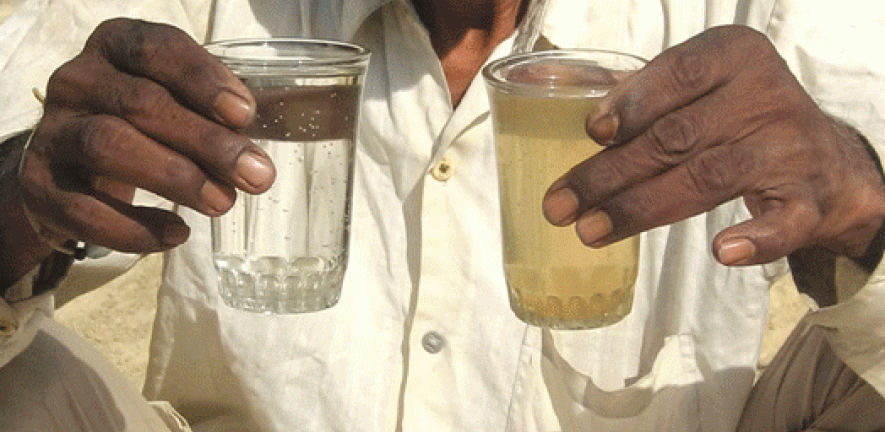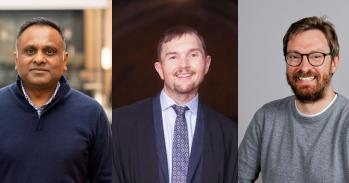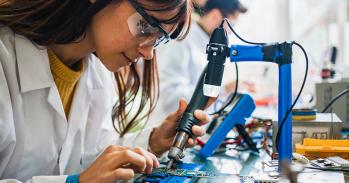
Research across the University is helping to clean up water in regions around the world.
Research across the University is helping to clean up water in regions around the world.
The problem of ensuring safe water provision in the face of environmental change is a global one. But for developing countries, where large investments in infrastructure are not possible, it’s a massive concern.
Dr Douglas Crawford-Brown
Almost 900 million people worldwide lack access to safe water; polluted lakes and waterways diminish livelihoods and health; and 2.6 billion people (almost half the population of the developing world) lack access to adequate sanitation1 .
In Cambridge, research groups from several disciplines are working in regions worldwide where dirty, polluted and inadequate supplies of water make drinking, cooking and cleaning an everyday challenge for the communities who live there. We take a look here at some of their solutions.
Water cleaning with mussel power
Zoologist Dr David Aldridge is a keen advocate for the amazing abilities of mussels to clean up water. His work in China is using these remarkable organisms as cheap and sustainable water filters to improve water quality and, as a result, it is hoped that a local industry will develop to farm them.
China’s Lake Dianchi was once a rich haven of aquatic species but increasing levels of pollution from a cocktail of fertilizer run-off, sewage and the effluent from factories has caused a huge deterioration in water quality. The water is undrinkable and a hazard to those using it for washing, and the native aquatic wildlife has all but died off. Where once underwater visibility was over 10 metres, on a good day it’s now a mere 30 cm.
Using a set-up that could be replicated in many of the world’s polluted freshwaters, Dr Aldridge from Cambridge’s Department of Zoology and colleagues at the Chinese Academy of Sciences have deployed specially bred giant mussels – once native to the lake – in experimental enclosures along the lakeside.
The mussels filter 50 litres of water a day, removing algae and suspended particles. ‘In just a few months,’ he explains, ‘not only did the water become clearer but native plants suddenly began to emerge from seeds buried for decades on the lake bed. These, in turn, provide habitat for insects, and then fish, and the system stabilises back to clearer water.’
One challenge has been the tendency of people living locally to eat the mussels. The team’s solution has been to turn to pearl farming to encourage the community to sustain the mussels in the lake. Chopsticks are used to insert a tiny bead of shell into the mussel, around which a pearl is formed. Recognising the potential impact of this idea on bolstering local industries, the World Bank awarded Dr Aldridge a Development Market Place Award to continue the work.
Dr Aldridge is also developing a means by which local authorities and managers of waterways can check the health of freshwater in their region, reducing the need for difficult and costly chemical testing. ‘We’re using the biology of the lake as an indicator of water quality. The number and type of organisms, or biotic index, provides a useful indication of the state of the water they live in. The guide book we are creating will enable users armed with only a hand net to monitor the condition of water in their province.’
Healthy water for households
Many people who lack access to safe water live in regions where conventional methods for supplying drinking water through water pipes are simply not possible or cost-effective. For these people, the alternative is to use household water treatment and safe storage systems (HWTS) based on chlorination, solar disinfection, ceramic filters or biosand filters.
As part of Dr Douglas Crawford-Brown’s wide research interests in water policy, he has been examining the effectiveness of reducing microbes in drinking water using low-cost HWTS in the developing world. As Executive Director of the Cambridge Centre for Climate Change Mitigation Research, in the Department of Land Economy, his research interests have an environmental perspective: ‘The problem of ensuring safe water provision in the face of environmental change is a global one. But for developing countries, where large investments in infrastructure are not possible, it’s a massive concern.’
His work has been in collaboration with colleagues Dr Mark Sobsey and Dr Linda Venzcel at the University of North Carolina, from which he moved two years ago, and Dr Christine Stauber at Georgia State University. Dr Crawford-Brown’s role in the long-term project has been to model the predicted human health impacts so that they can be compared against field epidemiological data in the Dominican Republic, Ghana, Honduras and Cambodia.
‘Our results show clearly that there is significant reduction in microbes, but also a residual concentration that can be quite difficult to remove,’ he explains. ‘In one project funded by the International Rotarians, we found that a simple sand filtration HWTS in the Dominican Republic halved the incidence of diarrhoeal disease, a major cause of death among infants in poor communities worldwide.’
Given that affordability of water systems is a critical regulatory issue, his research has also looked more widely at health–health trade-offs. ‘Trade-offs occur when the costs of water treatment in poor communities cause them to re-allocate limited finances, often away from buying medicine, unless public programmes are brought in to provide healthcare. Our goal is to provide policy makers with the evidence on which to base decisions on risk and in allocating budgets.’
Improving outcomes
Having worked for several years in rural Nepal trying to implement the use of water filtration units, Tommy Ngai from the Department of Engineering knows only too well that, despite their benefits, the adoption and continued use of HWTS is not always straightforward.
For the past four years he has been investigating how to scale up the dissemination of HWTS. Working with Dr Dick Fenner in the Centre for Sustainable Development in the Department of Engineering, his research has taken him to Nepal, southern India and Ghana, where he has carried out extensive interviews with project management staff, community workers, government officials, shopkeepers and household end users.
‘It’s not uncommon for communities either to not take up HWTS or for the equipment to be found lying abandoned a year or so later,’ he explains. ‘There may be a lack of awareness among potential users, or the devices may be too expensive to operate and maintain, or the supply chain unavailable, or there may be technical difficulties and ineffective post-implementation support.’
Ngai’s research has, for the first time, captured the big picture of the many competing factors at play – from the technical and financial, to the social and institutional. The outcomes are three programme-specific computer simulation models linking over 300 different variables. The models can help implementing organisations to appreciate the complexity of project management, to understand the interactions and consequences of any policy strategy and, crucially, to make recommendations for increasing the success of an HWTS programme.
‘Literally thousands of scenarios can be simulated in the model, whereas in the real world you can only try one strategy at a time,’ he says. ‘Comprehensive analysis showed that no single strategy will always work in all situations, and that some measures that have long-term benefits may at first appear counter-intuitive.’
One of the models has also been designed as an easy-to-use simulation game that can be run on a PC, allowing agencies and government officials to explore the effects of different potential intervention strategies concerning programme expansion, promotion, training, pricing and capacity building, and to predict adoption and sustained use of HWTS.
In his next post, as Director of Research Learnings at the Centre for Affordable Water and Sanitation Technology in Canada (www.cawst.org/), Ngai will be using his research to help NGOs and government policy makers to understand quickly how best to encourage sustained adoption of HWTS in their region.
1 www.unep.org/pdf/SickWater_screen.pdf
For more information about these projects, please contact Dr David Aldridge (da113@cam.ac.uk) at the Department of Zoology; Dr Douglas Crawford-Brown (djc77@cam.ac.uk) at the Department of Land Economy; Tommy Ngai (tommyngai@yahoo.ca) and Dr Dick Fenner (raf37@cam.ac.uk) at the Department of Engineering.
Sanitation innovation
Ensuring access to safe water isn’t the only challenge; it’s also what you do with waste. An innovative study has come up with a prototype system that could improve sanitation in urban slums.
The realities of high-density living in urban slums have made conventional approaches to improved sanitation practically impossible, with low-income families renting living space in tightly packed, unplanned settlements serviced by pit latrines.
Nate Sharpe’s research in the Centre for Sustainable Development has come up with a solution for emptying pit latrines in the slums of Dar es Salaam, Tanzania, although his findings should be applicable to many other similar cities around the world. ‘Pit latrines are filling up faster than ever and people are often forced to rely on unhygienic emptying methods,’ he explains. ‘If smaller amounts of the sludge could be removed more often, it becomes easy to transport – even on the back of a bicycle.’
Sharpe has designed a prototype bicycle-powered vacuum pump/tank system and a business model for small businesses to run a latrine-emptying service at a low enough price that even the poorest might be able to afford to make their latrine usable again. The next stage is to test the device in Tanzania and to put the device into production.
His research was completed as part of an MPhil in Engineering for Sustainable Development with Dr Heather Cruickshank, and is just one of around 35 similar projects annually that are finding innovative engineering solutions to a host of sustainability problems. Many focus on developing countries where, as Sharpe has highlighted, sometimes the solution lies not in the development of new technology but in the creation of a new business angle that works in the local community.
For more information about these and other projects, please contact Dr Heather Cruickshank (hjc34 AT cam DOT ac DOT uk).
This work is licensed under a Creative Commons Licence. If you use this content on your site please link back to this page.





